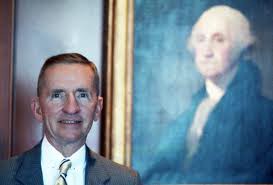essays
People Who Need People

“And the Story, Full of Longing and Intrigue, Began”: Both Ways Is The Only Way I Want It by Maile Meloy
“The raspberry bushes that hung over the garden had been cut so the branches lay with their crushed fruit on the ground. The smell was of wet dirt and sweet berries and green leaves and rot. Valentine sat among the ruined heads of lettuce, and her mother lay down with a little moan and rested her head on Valentine’s knee.” — in the wake of a boyfriend’s destructive exit, “Nine”

In Maile Meloy’s short story, “Nine,” a nine-year-old named Valentine is caught in the undercurrents of her mother’s emotional life after her parents’ divorce. The story’s locale is a mystery — a college town, presumably somewhere out West, somewhere not California. California is where her father has gone. Valentine’s landmarks, the way she knows the place she lives from anywhere and everywhere else, are the people who inhabit her home: her mother’s boyfriend, Carlo, an Italian professor at the local college, his son Jake, a mercurial 10-year-old, and, of course, her mother, whose grasping for adult intimacy veers unsettlingly toward her daughter.
“He said I have wonderful cleavage,” Valentine’s mother tells her after a night with Carlo. “Do you know what that is?” When Valentine responds that she doesn’t, her mother explains, “It’s the space between your breasts.” “Your breasts”: Meloy’s compression of telling detail speaks volumes. We can at once feel the mother’s exultation, her childlike seeking of affirmation, the way her ego has blurred with her daughter’s, and, finally, how that blurring can only enthrall Valentine, while alienating her from the reverie of being nine years old. A violation that isn’t quite. The story’s title stands there itself, opaque and monolithic, outside the time of the narrative proper: half, indictment for a felt transgression, half, willful claim to pride. Thoroughly, irrevocably, in between.
The stories in Both Ways Is The Only Way I Want It, title taken from a poem by A.R. Ammons, feature lives whose pitched emotional states register on the analytical mind like Escher drawings: amazingly intricate bafflement. Meloy’s characters do the wrong things for the right reasons, the right things for the wrong. Everett, the stunningly self-deceiving husband in “O Tannenbaum,” muses about an affair late during his wife Pat’s first and only pregnancy: “[It] had saved their marriage. He had thought he wanted out, but he had seen that he was wrong, and had come back for good.” This sounds almost believable, a sentiment that would be so nice if only. What actually awaits Everett and Pat and their now four-year-old daughter around the snowy bend one Christmas is a stranded, stormy couple with a broken ski whose sibling-like repartee splits the atom’s difference between con and come-on.
The dramatic arcs in Both Ways… trace a thrilling unmooring of right and wrong — not that Meloy ever dispenses with such categories completely. Her prose, spare like James Salter circa Last Night, never loses track of the most vulnerable party (unlike Salter), hope sloughing into desire sloughing into desperation.
Conversely, her most resolutely selfish characters, like Everett, or Liliana, a grandmother and former Nazi-Germany movie queen, brazen with her wealth (“Men loved her, and she made efficient use of them”), returned from the dead to haunt her grandson’s Los Angeles domesticity (news of her passing, at her Spanish villa, inaccurately reported), thrill to the unlikelihood of any given moment, the charm of precarious footing. Liliana’s expectations jar with her grandson’s modest circumstances — and yet, he cannot help hoping she will see something in him, in the version of family-life he has found, which, genetically anyway, is an extension of her own. The morning following her arrival, Liliana takes his children out for the day and returns with a puppy, which no one will have the time to care for: “My grandmother looked around the living room, as if for the dog-loving servants who might be hiding behind the furniture. She looked back at me, wide-eyed. ‘Every child should have a dog,’ she said.”
Phrases that actively frame perception abound in Meloy’s dialogue, evincing her characters’ desire for control in their lives: Liliana on entering her grandson’s home declares, “So this is how you live”; a woman running into the wife of the man she’s sleeping with finds “too much reality”; memories of past transgressions between a couple are “ammunition like that.” After a long journey, a cowhand stands before the woman for whom he has unconsummated feelings, at a loss for words: “Her world had lawyers, downtowns, and mountains in it. His world had horses that woke hungry, and cows waiting in the snow, and it was going to be ten hours before he could get back to get them fed.”
Meloy sharply renders the battle her characters fight to define themselves, definitions that any given encounter might rend. It is the darkness and excitement of such a fluid dynamic that they covet, a youthful openness to contingency, and not just the guys. For taking place largely in the West’s wide open spaces, Both Ways… feels as contemporary as contemporary could ever be. Decades hence, the pages may well be blank, the words having sizzled clear away in the Montana night.
“A Good Ticket Out of Kenosha”: White Coat, Black Hat: Adventures on the Dark Side of Medicine by Carl Elliott
“According to o

ne small study of medical residents in the Canadian Medical Association Journal, one way to convince a doctor that he or she cannot be influenced by gifts may be to give one; the more gifts a doctor takes, the more likely that doctor is to believe that the gifts have had no effect.” — Carl Elliott on the changing face of medicine
In the early 1970s, a group of researchers asked themselves, as Professor Carl Elliott tells it: “How would a medical audience respond to a lecture that was completely devoid of content yet delivered with authority by a convincing phony?”
The answer was as follows:
The authors hired a distinguished-looking actor and gave him the name Dr. Myron L. Fox. They fabricated an impressive CV for Dr. Fox and billed him as an expert in mathematics and human behavior. Finally, they provided him with a fake lecture composed largely of impressive-sounding gibberish and titled “Mathematical Game Theory as Applied to Physician Education” and had him wear a white coat and deliver the lecture to three separate medical audiences… Overall, almost every member of every audience loved Dr. Fox’s lecture, despite the fact that, as the authors write, it was delivered by an actor ‘programmed to teach charismatically and non-substantively on a topic about which he knew nothing.’
More than actual authority, the kind that depends on experience, the perception of authority held sway, an actor on stage. (As a part of her career retrospective last spring at MOMA, Marina Abramović had a video that played on the trope of the lab-coat; traditional dancing was also involved.) The study’s ramifications for the entertainment industry could not have been more tantalizing. For the medical industry, though, it was another matter.
For one thing, medicine has not always seen itself as an industry, posits Elliott’s new book White Coat, Black Hat. To the doctors, at least, it was a profession. If the tenor of Elliott’s argument sounds at all like the ramblings of a crotchety old man that is exactly how Big Pharma marketers would spin it. When public discourse assumes the veneer of entertainment, ‘sounds at all like’ quickly trumps ‘is.’ Seeming is believing. Vioxx (by Merck), Fen-Phen (by Wyeth), Neurontin (by Pfizer): in recent decades, Pharma companies have proven as much time and again.
White Coat, Black Hat is not a rant. Instead, the narrative is a measured, if deeply skeptical, account of how medicine has changed in the past thirty some-odd years. A sort of Dante’s Inferno delivered in straightforward prose; rather than descending circles of hell, we bear witness to medical “communications,” medical “education,” the proliferation of imitative magazine articles and slide kits, podcasts and Webinars, grand-round lectures at hospitals, live events with opinion leaders, prescription drugs turned commodity, press junkets with branding everywhere: flat-screen TVs, banners on the walls, brochures, trinkets and cappuccino. Yes, that’s right. Branded cappuccinos.
Elliott even finds enjoyment in many of the stories industry apostates share with him (the character of a “detail man,” the rep who meets one-on-one with a doctor, is cast as “a cross between a genial con artist and a comedic character actor”). The changes in medicine are not sui generis; the issues Elliott raises have existed on some level for as long as human beings have hoped for a cure. Even if snake oil salesmen were more easily identifiable when the label on the jar read ‘Snake Oil.’
Medicine saves lives; doctors do good work: Elliott, the son of a physician, takes pains to emphasize this. He also owns up to tossing Merck Frisbees and Pfizer Nerf balls as a boy. What Elliott stands defiantly against is the blockbuster-drug model: “Once a company has so much money riding on the success of a single drug, it faces enormous pressure to have that drug succeed; if it fails, the entire future of the company might be jeopardized.” Under such pressure, ethical considerations understandably blur, like the camera shaking in a Darren Aronofsky film.
After all, it must be said, who can resist a ton of money? This guy, sure. But who else? Not the Harvard child psychiatrist, one of the U.S.’s most prominent advocates for treating children with antipsychotic drugs, who accepted 1.6 million dollars after promising “positive research results.” Not Dr. Robert Sade of the Medical University of South Carolina who once upon a time declared in the New England Journal of Medicine, “Medical care is neither a right nor a privilege: it is a service provided by doctors and others to people who wish to purchase it.” Not the editors of the New England Journal of Medicine whose publication garnered nearly a million dollars for reprints of Merck’s “notoriously misleading” VIGOR study on the drug Vioxx. Not freelance medical writers who, in 2005, made on average $120,000 per year (hmmm…). And not academics who, Elliott admits, are “like fading European aristocrats so strapped for cash that they have turned their stately homes into museums for gum-chewing Americans and must contemplate selling their titles.” Ah, if only gum-chewing Americans stood to win from the American doctor’s transformation into salesman. But who deigns tell the gum-chewing American what’s good for him?
Doctors, it used to be. The possibility of their corruption Elliott sees as “less a matter of willful deceit than self-deception.”
–Jeff Price is a Brooklyn-based editor and writer.









